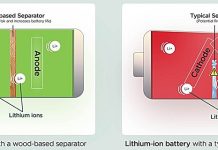
Hydrogen, a vital component in various industries and potential green energy source, is witnessing soaring demand globally.
According to the International Energy Agency (IEA), we can expect to see a remarkable jump in its demand, reaching up to 530 million tons by 2050, which is nearly six times what it was in 2020.
But producing hydrogen isn’t as straightforward as it may seem, especially when considering environmental impacts.
Today, most of our hydrogen, around 80% to be exact, comes from a method that involves combining natural gas and water vapor.
This method, unfortunately, emits carbon dioxide, earning the produced hydrogen a name – gray hydrogen.
In contrast, green hydrogen, made without releasing carbon dioxide, stands as a cleaner option but comes with its own hurdles, mainly regarding production cost due to the use of expensive catalysts like iridium oxide.
A Glimpse into Affordable Green Hydrogen Production
But there’s a beam of hope in making green hydrogen more accessible and affordable.
Dr. Yoo Sung Jong and his team at the Hydrogen and Fuel Cell Research Center in the Korea Institute of Science and Technology (KIST) have pioneered a technique that significantly cuts the cost of producing green hydrogen.
Their secret weapon? A device for water electrolysis (splitting water into hydrogen and oxygen using electricity) utilizing a carbon support.
Here’s a bit of context: Carbon supports, despite their promising electrical conductivity and specific surface area, haven’t been popular in these types of processes because they can easily convert into carbon dioxide under specific conditions.
Yet, the research team didn’t back down from this challenge and created a cheaper alternative catalyst involving nickel, iron, and cobalt, placed on a hydrophobic (water-repelling) carbon support.
This structure and materials used not only provided excellent durability but also demonstrated a reduced level of carbon corrosion, cutting down the generation of carbon dioxide by over half!
The Bright Future of Green Hydrogen Technologies
The results from Dr. Yoo and his team were not only impressive but potentially game-changing.
Their catalyst support achieved a current density (a measure of how much current flow occurs in a defined area) of 10.29 A/cm^2 in certain conditions, surpassing the 9.38 A/cm^2 of the pricier commercial iridium oxide, while also showcasing a commendable durability of around 550 hours.
In the words of Dr. Yoo, this research signifies a pivotal step towards making water electrolysis technologies, which were previously hindered by corrosion issues, viable and anticipates a surge in water electrolysis technology as research expands into various supports.
The progress made by KIST researchers doesn’t just bring us one step closer to mitigating the environmental issues associated with gray hydrogen production.
It also signals the potential for advancements in various eco-friendly energy technologies, particularly green hydrogen production.
As we navigate towards 2050, and the expected surge in hydrogen demand, developments like these are not merely innovations; they are essential strides towards a sustainable future, where green hydrogen might play a pivotal role in our energy landscape.
The innovation and research in the realm of green hydrogen production are vital in navigating toward a more sustainable and eco-friendly future.
Dr. Yoo and his team’s work contributes significantly to this journey, offering a glimpse into a future where green hydrogen is not only environmentally friendly but also economically viable.
While technical, these advancements are crucial in understanding and demystifying the path toward cleaner energy alternatives.
The research findings can be found in Energy & Environmental Science.



